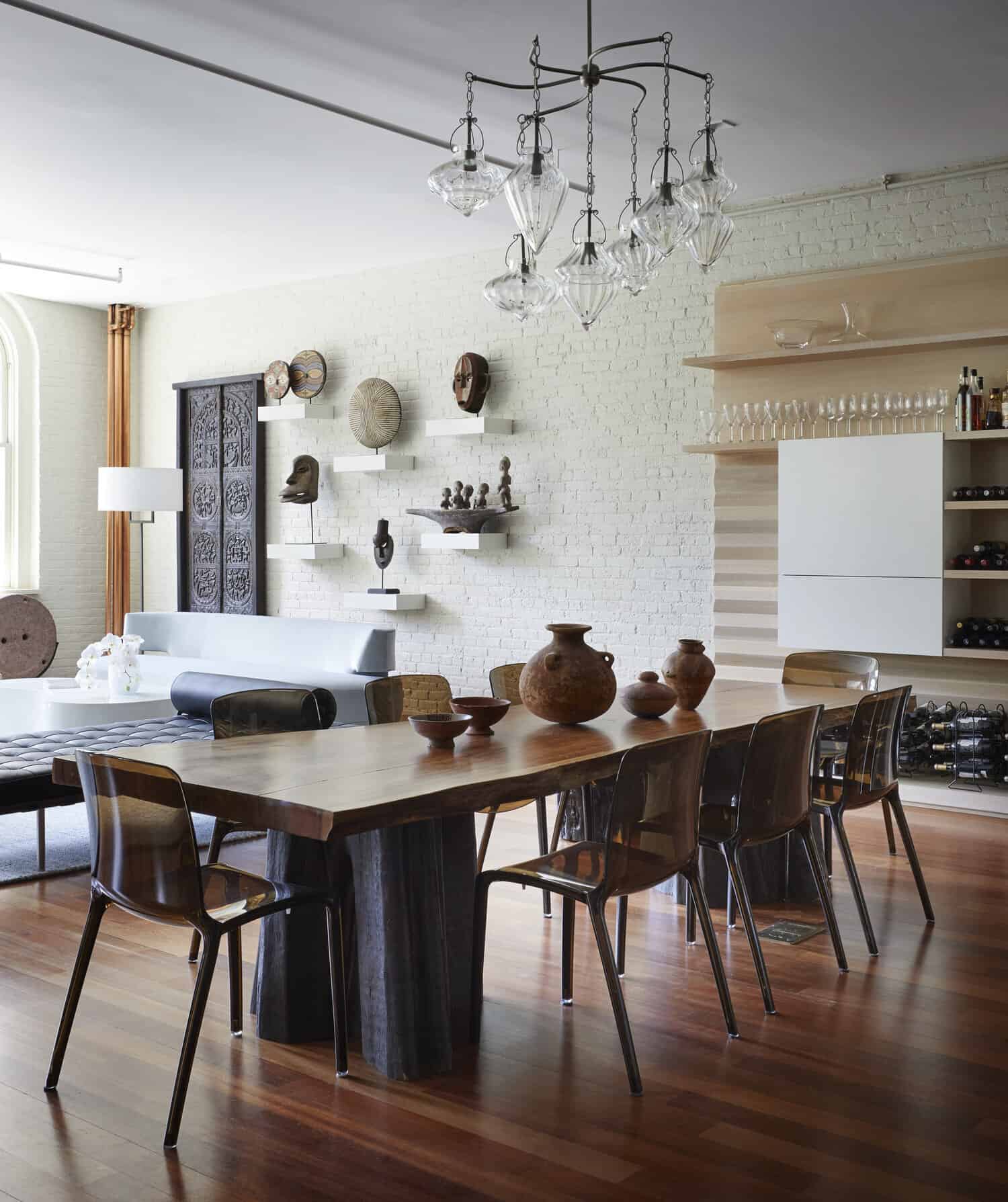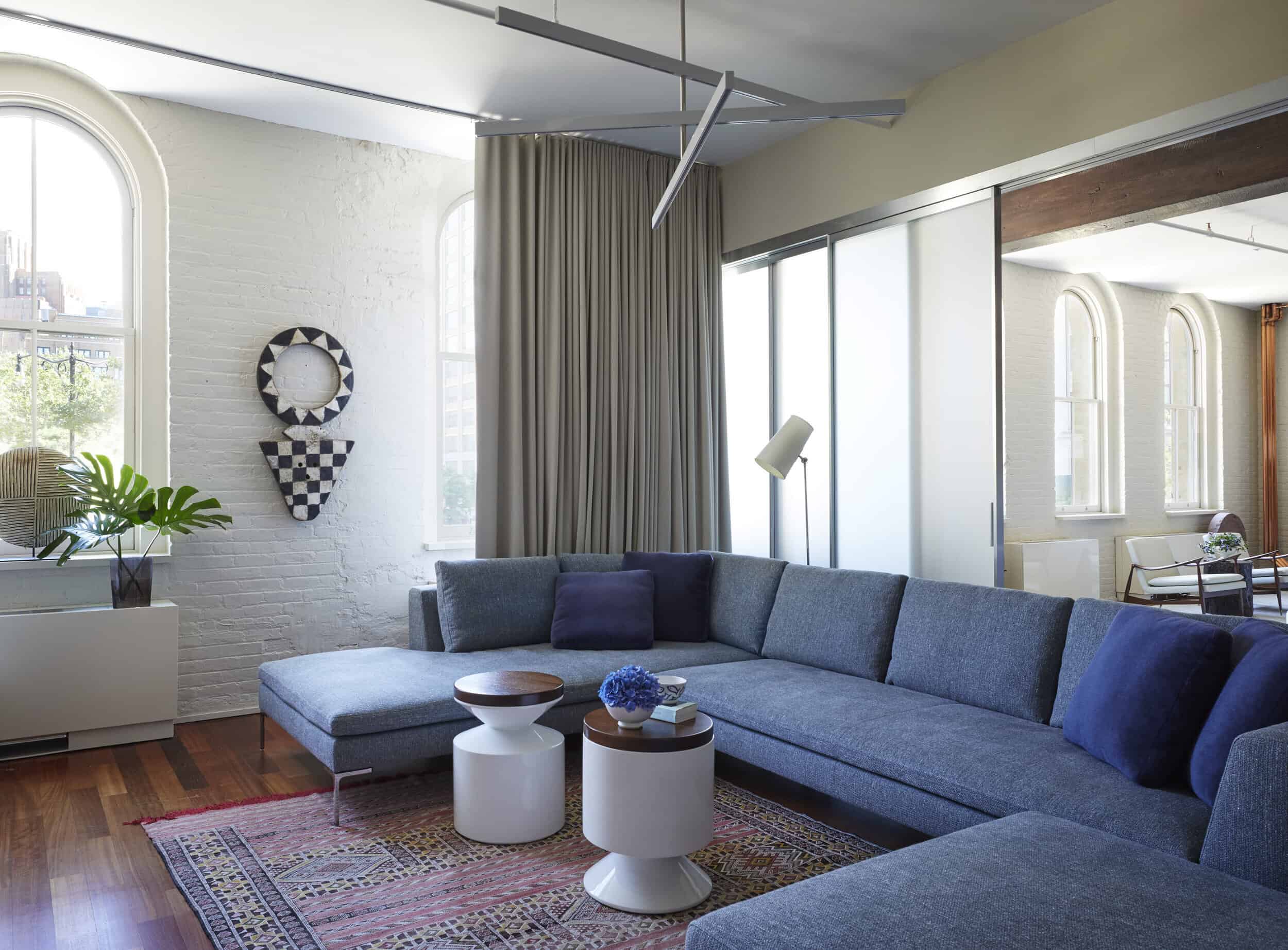
Staying Grounded: A Designer’s Guide to Flooring
Let’s start from the ground up: deciding on flooring can be one of the most daunting design tasks you come against. Because let’s face it – our flooring selection will truly ground the entire space and will end up becoming one of the most important decisions you will make with your home.
In today’s design guide, I am going to walk you through key considerations for wood, tile, carpeting and more, so when you get to the end, you love what you’re standing on.

Wood Flooring
Once you’ve decided on wood flooring, a whole world of possibilities opens up that you might not have even known about! But let’s start with the basics: there are two types of wood flooring you can choose from: solid wood and engineered wood.
Engineered wood floors are less expensive than solid wood, but you will have a narrower range of colors and styles. It will almost always come pre-finished, due to the thin layer of hardwood bonded over layers of plywood, and you can only re-stain these floors once in a lifetime, so you have to choose wisely with your engineered wood selection. However, the nice part about this is that you know exactly what you’re going to get with your color, versus solid wood floors can take stains slightly differently.
Engineered wood floors are also easier to install than solid wood flooring; as solid wood floors are best installed over one to two layers of plywood. But engineered wood floors can be placed over concrete subfloors, reducing installation time (and headaches).
Solid wood floors will come at a heftier price tag, but they also will allow for more varieties in wood types and stain colors, and it can be sanded and refinished over and over again. If you’re designing for longevity in your forever home, solid wood is a great way to go. (And solid wood floors are just downright gorgeous!)
One of the most popular choices for solid wood flooring is white oak. You’re spared the pink undertones of a red oak so it is beautiful in its natural stain or if stained, and it holds color very well. If you’re leaning towards a darker floor, I would first recommend a walnut, but Ash also tugs at my heartstrings. It is not as widely used, but certainly a beautiful wood.
There are so many stains to choose from, and it’s best to see it for yourself! I always recommend that a flooring contractor put out six to eight different combinations of colors directly on your floor so you can see what works best with your furnishings and surroundings.
And my last piece of advice here: wood and water do not mix. Keep wood floors out of areas that are damp and have high humidity, like a bathroom and a laundry room, and if you also live in an area that has the tendency to flood (read: basements).

Stone, Ceramic and Porcelain
Time to talk tile.
Starting with the kitchen, there are really three types of flooring best suited for your chef oasis: stone, ceramic and porcelain. But in my designer’s opinion, unglazed porcelain tile is your best bet. It’s backed by some serious durability, thanks to being fired at a high temperature, and the unglazed component of it takes away the worry of slipping – while also making it very easy to maintain.
Ceramic is another lovely option because of the wide variety of colors and patterns, but, be warned: it is not as nonporous as porcelain so scratches and stains can develop over time.
Stone is the most expensive of the kitchen flooring options (think: dreamy marble, granite, slate, and travertine). It undoubtedly will give an upscale look to a home, but more maintenance is required. This is a great option in warmer climates since natural stone does have a cooling element.
Moving onto bathrooms, powder rooms and mudrooms… My go-to for these rooms are always porcelain or ceramic tiles. There are so many options, colors, and sizes available that you are sure to ground your space in a beautiful and unique way using any of these. I would definitely consider an unglazed finish with larger size tiles to decrease slippage when these areas are wet. If you can’t stop thinking about a beautiful glazed finish, then I would recommend a smaller tile, like a penny tile, that has lots of grout lines to increase the traction on the floor.
And undoubtedly, I will always be a huge fan of marble on the bathroom floor. Marble tile is offered in so many shapes but my dream would be to wrap marble slabs on the floor and up the walls… Any takers want to make this happen with me?!

Carpeting
What can I say besides: wool truly has my heart (and is about to steal yours, too). It is the only carpet I can highly recommend to my clients. It is softer than synthetics, exceptionally durable and offers great stain resistance and cleanability.
The face density is very important in choosing a carpet. The more dense the face, the longer the carpet will last and the more well-made it is.
But the padding that goes underneath the carpet is also a key factor that many people don’t think about as much. Whether you’re installing wall-to-wall carpet or laying down a stand-alone rug, quality, heavy (repeat: heavy, not necessarily thick) padding minimizes carpet flattening and wear by absorbing some of the impact of foot traffic. It also creates a softer walking surface, absorbs noise, insulates cold floors, and prevents the carpet from shifting.
In a bedroom, you may want to use a thicker pad for a bouncier, more luxurious feel, but if you take anything away from this, it’s to not confuse thickness and heaviness.

Layering with Rugs
This may come as a surprise, but I’ve got to tell you: wool is the winner here again. Wool rugs can come in so many different weaves and patterns, so you are not limited on textures and color for your spaces in the slightest. You can go from a thin, flat weave to a knotted shag rug – all while staying true to wool.
Yes, it is more expensive, but I think it’s entirely worth the extra costs as it is naturally stain-resistant (due to the lanolin in wool), soft and will last for centuries (yes, centuries!).
When it comes to styling rugs, take a read of the room first. Some rooms call for a simple 8×10, and others will be completed by some beautiful rug layering. Each style has its place, but I can tell you, rug layering can add so much warmth and uniqueness to a room. This works particularly well with a plain rug, like a sisal, to cover the main part of the area, and then to bring in smaller rugs, like a hide or a plush Kilim to designate specific seating areas. Rugs have the power to create vignettes for you!
amy kartheiser design
home
about
services
portfolio
press
contact
Copyright © 2025 Amy Kartheiser Design | Website design by the la.rue creative studio